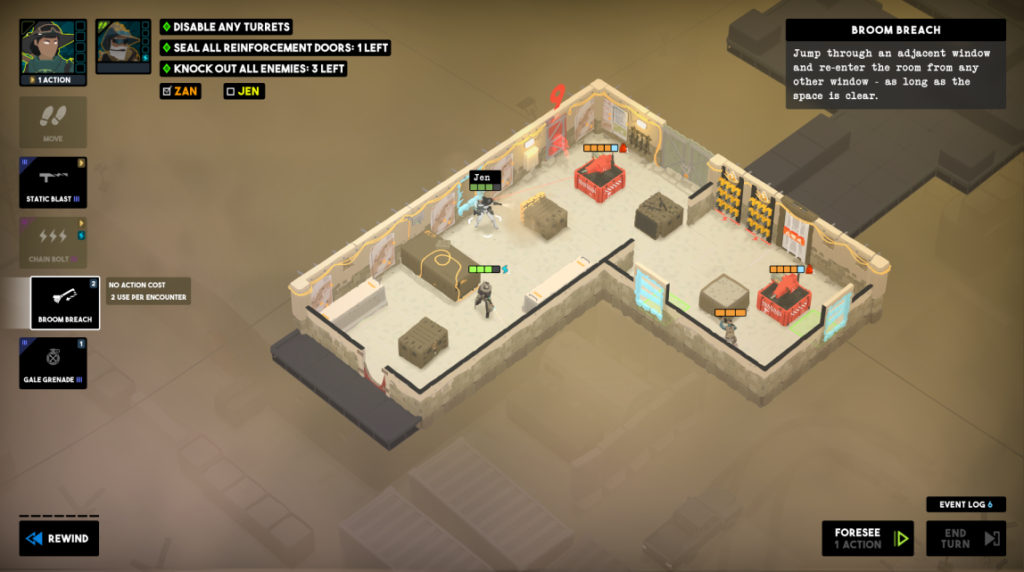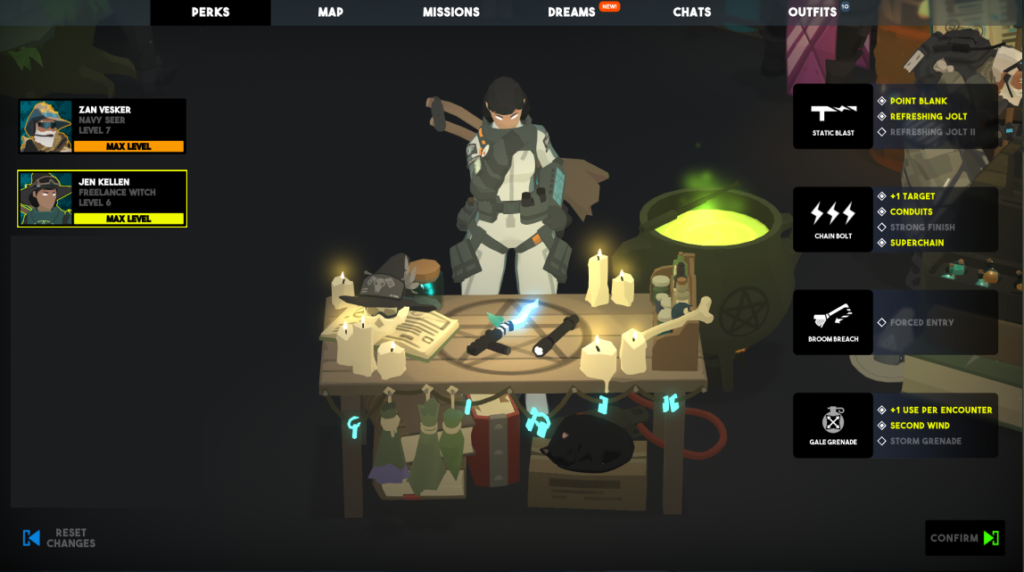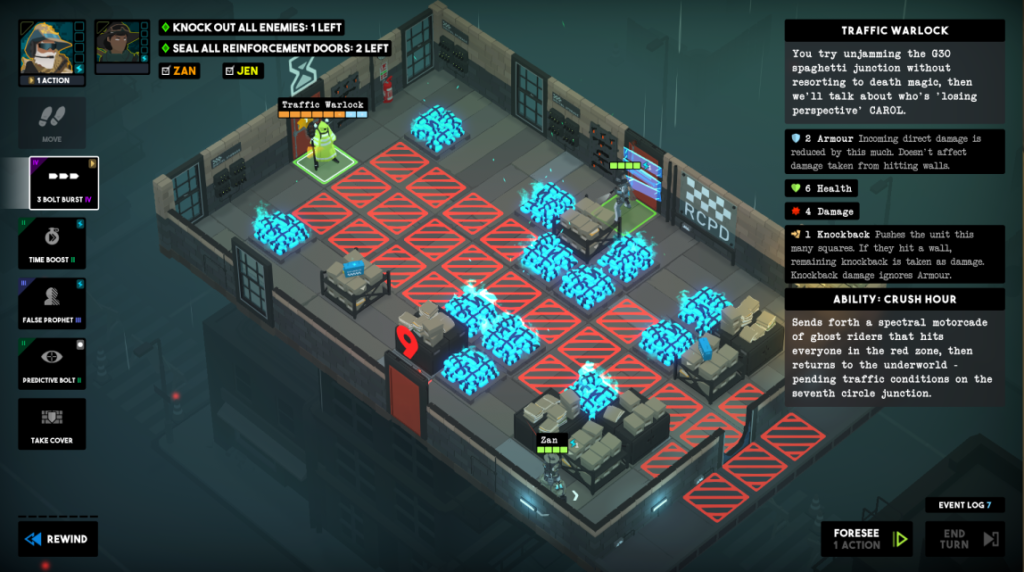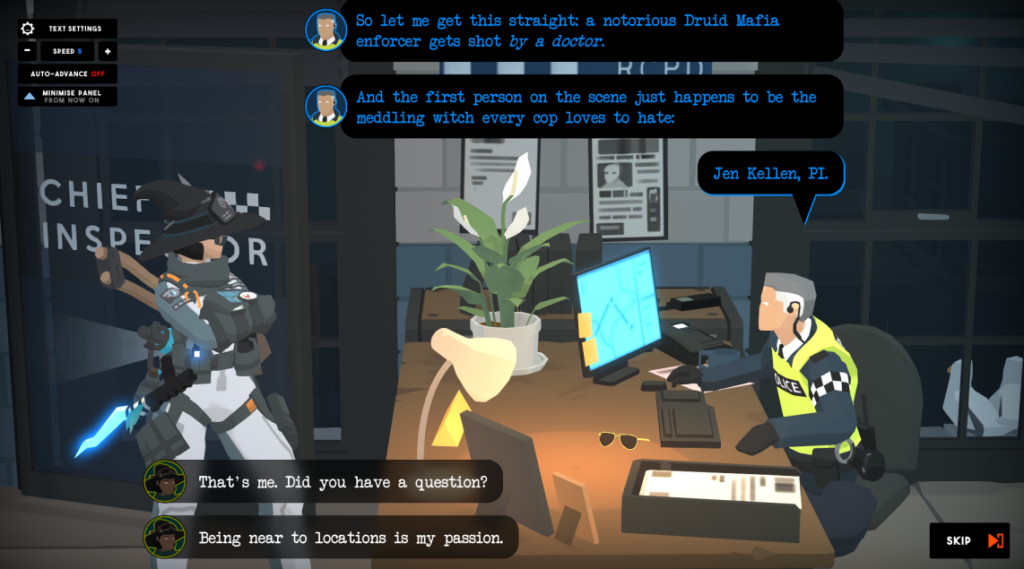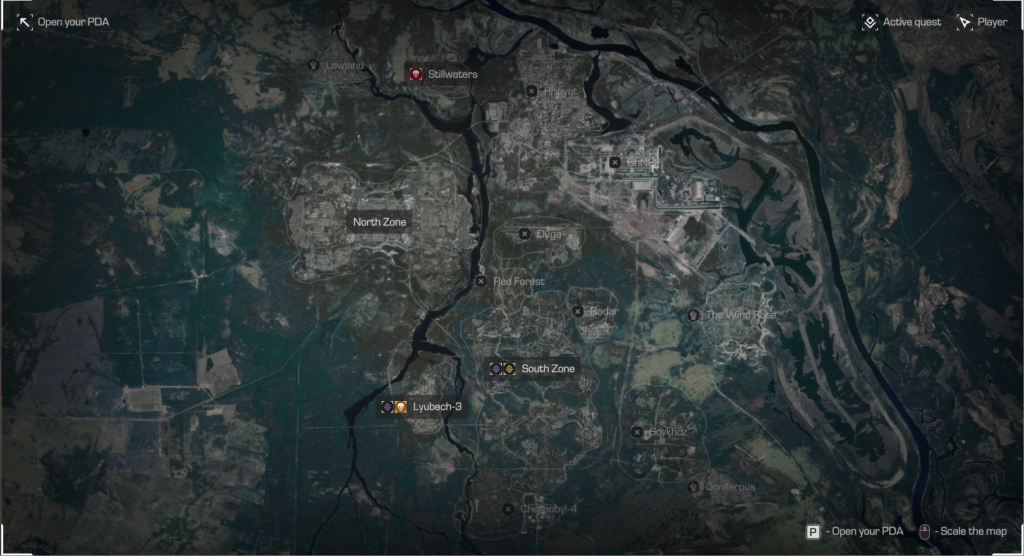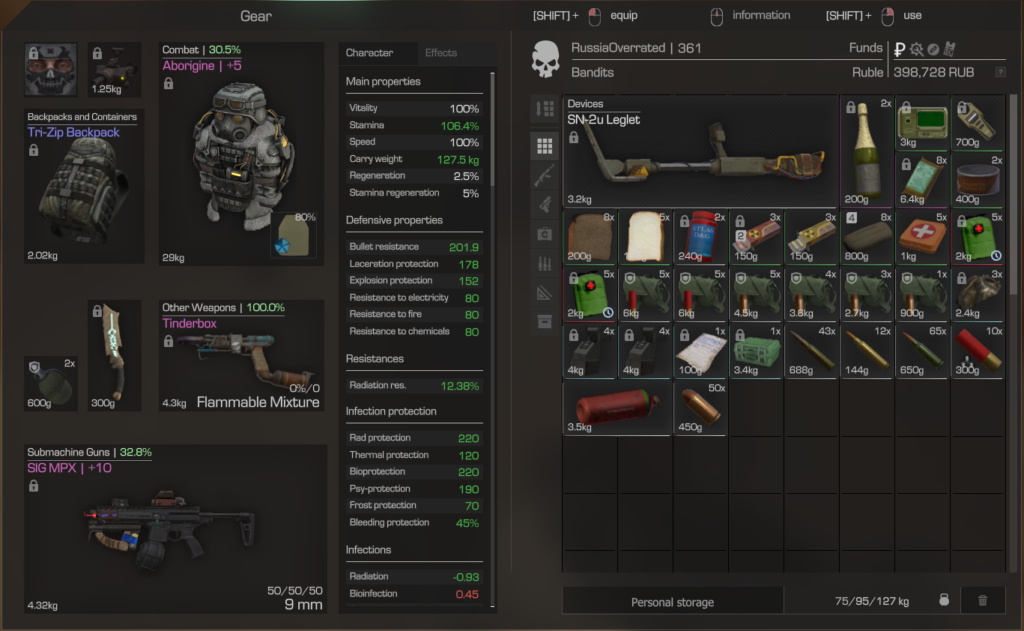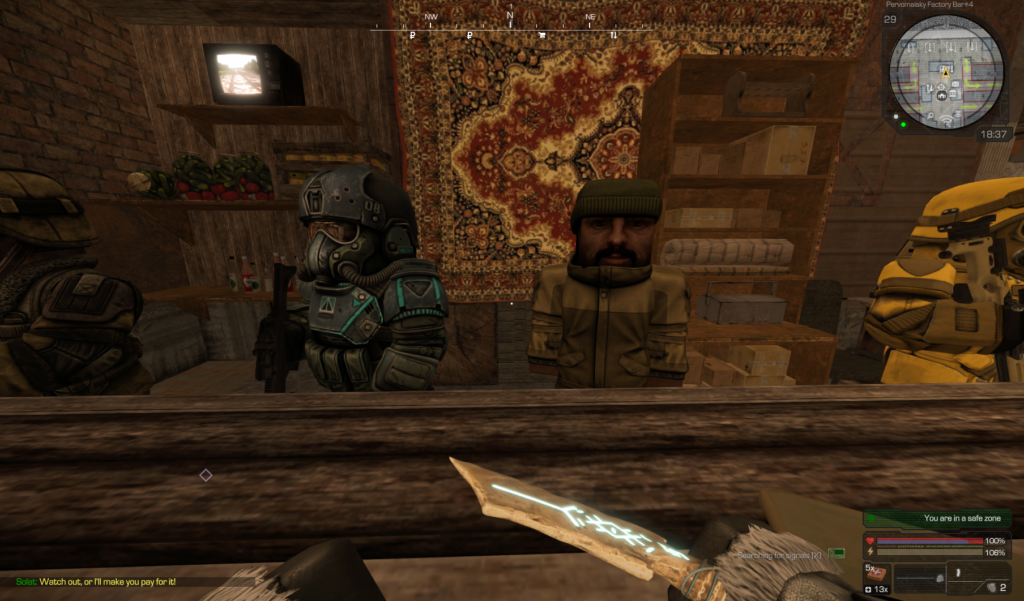The Plucky Squire is most beautiful game I’ve played this year. Visually, it’s an absolute love letter to art and the physical creation of art.

I wish I could say something as nice about the gameplay or story.
I have to admit, I feel like I got beaten to the punch on this review. By Kotaku of all places. By some dude named Moises Tavera.
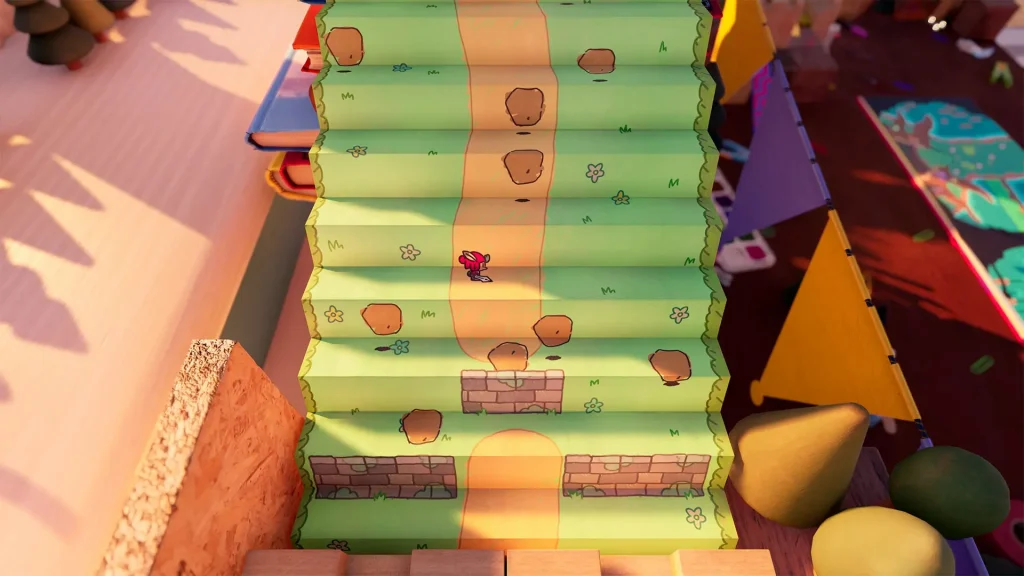
This game is stunning. It’s rare that I suggest playing a game for the visuals. In fact, I think I’ll let that stand as my general recommendation when it comes to The Plucky Squire.
But take away those visuals, and you’re left with an easy and incredibly linear game. And it’s a shame, because The Plucky Squire has so much potential in its mechanics. But it never really offers the player any freedom to use them.
Story
The Plucky Squire is the story of Jot. Jot lives in a storybook world where he stops the schemes of the evil wizard Humgrump, with help from his two friends and the wise wizard Moonbeard. It’s implied that this has happened many times before, but this time, Humgrump blasts Jot with magic that kicks him out the story. For most of the game, you’ll be jumping in and out between the between the book and the “real world” of a child’s work desk.
This meta aspect of “Story within a story” isn’t really examined too much ( except for it possibly causing a time paradox). Again, this is fine. It’s a minor element, and it doesn’t bother me.
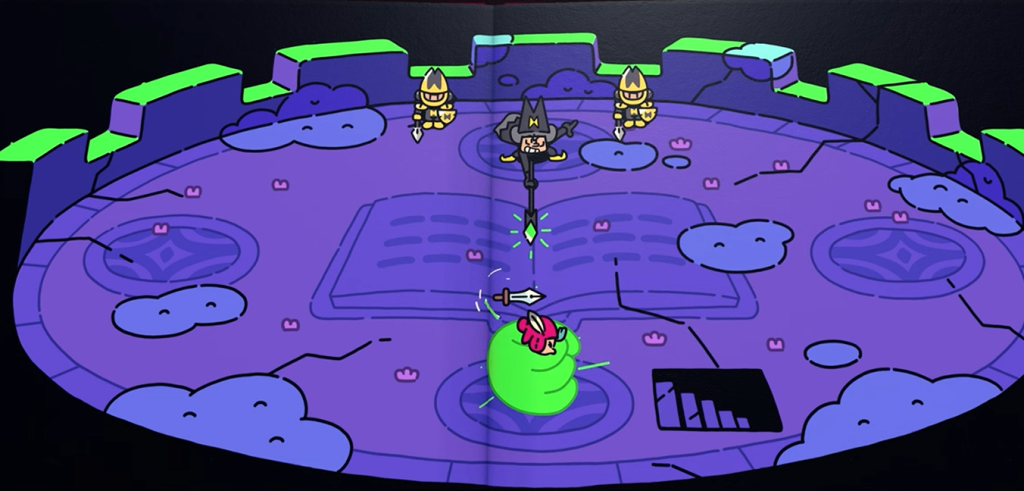
What does annoy me is how simple the story is. Ostensibly it’s a tale about creativity and imagination, but it really only pays lip service to that concept. Jot is a writer, and his sword is a pen nib. Okay, that’s cool, but where is that mechanically?
There was a lot of space to foreshadow the game’s one big surprise (the villain was once an artist too!), but the developers chose not to do any forehsadowing. In addition, the “one big twist” isn’t relevant to the story.
Side Note: I don’t think that the Plucky Squire was trying to make Humgrump relatable. But I found him kinda relatable after the game reveals that he used to just be a bad poet. I’m an amateur artist who is quite bad at art, and struggles to enjoy it. I’m cognizant of my own lack of improvement. I put most of my energy into the job that pays me. I don’t know what I’m supposed to take away from The Plucky Squire’s story. If I don’t improve my art, I’ll become an evil wizard?
There’s also a real disconnect between the game’s written message—that of a love letter to creativity and imagination—and how linear the actual gameplay is.
Gameplay
Ostensibly, The Plucky Squire is a puzzle platformer. Let’s start with the platforming. This game’s primary conceit is the ability to jump between a 2d top-down book, and a 3d “real world.” Both worlds control pretty much the same, outside of the third dimension. There’s also a very small number of side scrolling sections. There’s combat, but it’s so laughably easy that it mostly just serves to break up the puzzles
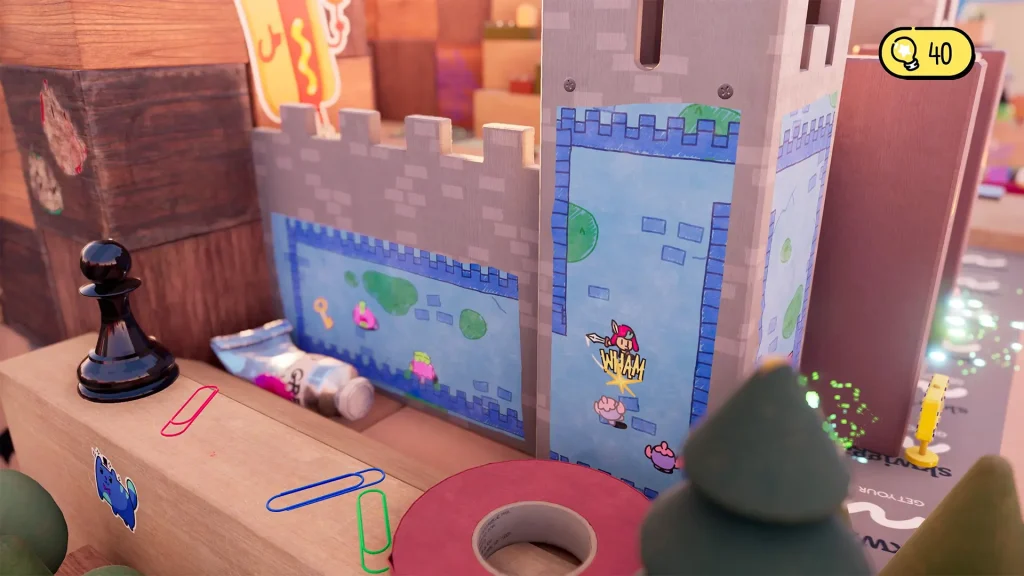
But the puzzles. Oh, the puzzles.
The puzzles are incredibly dull.
The Plucky Squire introduces a large number of mechanics that could have been used as part of a larger scale system of puzzles. And then it just… doesn’t use them. While you’re given a variety of abilities, they really just function as keys.
For example: the game gives you the ability to stop objects in the scene. But you only use it in a few specific areas to stop specific objects. The game gives you the ability to tilt the book. But tilting only pushes around one or two things, and it pushes them on hard coded rails.
This path unlocks with the stop time key. This other path unlocks with the bomb key. Another path unlocks with the tilt key.
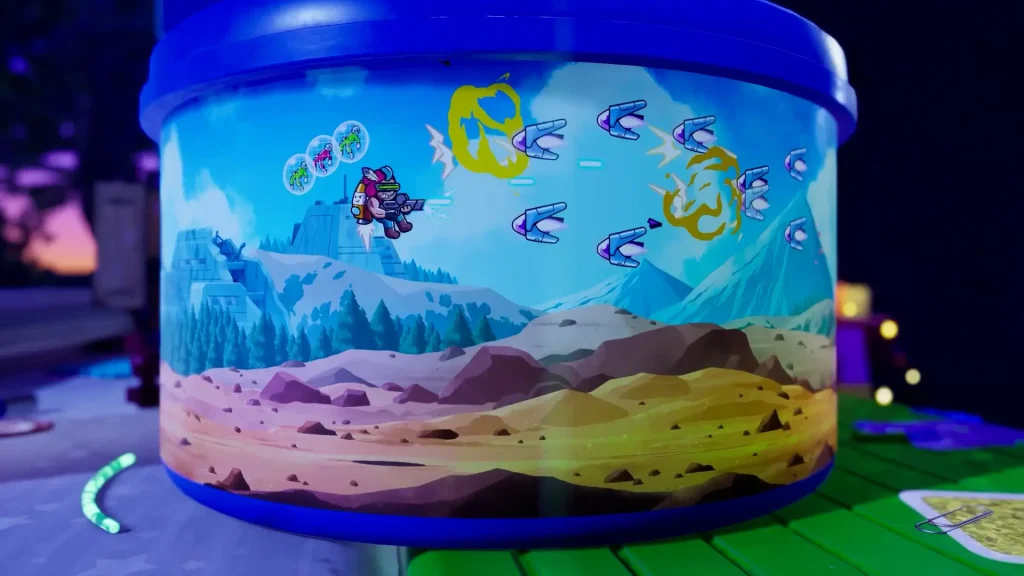
The mini-games don’t really help. They’re amusing, but they’re also short, and it’s hard to see how Punch Out, or Puzzle Bobble really sell the themes of the characters you’re playing as.
And the stealth sections with the bugs just kind of suck. They are the only part of the game where I struggled at all, and it’s mostly due to weird patterns, and strange pathing and sight lines.
But speaking of bugs…
Bugs
The game is buggy. It’s less buggy now that it’s been 3 weeks since release. But a non-zero portion of my playtime was spent trying to fix a soft lock in the final chapter of the game where my characters got stuck looking at a bench. Sure, it got fixed, but it got fixed by another Steam user, not the devs.
There was also apparently a fairly big bug that would permanently lock up the game if you used two mechanics in a non-intended way. Again, this goes back to the whole “abilities act as keys to specific doors” thing.
I am pretty lenient on bugs and glitches most of the time, but there was point where it looked like I had wasted 6 hours of my life.
I was pretty grumpy.
In Retrospect
Okay, so looking back, I finished The Plucky Squire about 3 weeks ago. Then I got involved in some other stuff, and never finished this write up. This last weekend, and I did a game jam, and I got a pretty solid reminder of the fact that 1. Making games is hard and 2. Getting players to do what you want is hard.
With that lens, I don’t think the Plucky Squire set out to be patronizing to its players. I do think though that the game was likely rushed in development.
There are a bunch of small hints that point to rushed development. For me, the biggest hint is how Jot’s friends just don’t have character arcs. They’re foisted into the game, given a fear, given one screen of character development an hour later to get rid of said fear, and a mini-game section in the final boss.
And looking through this lens of rushed development, it makes a lot more sense as to why a set of potentially fascinating mechanics involving clever interactions are dumbed down to a set of linear puzzles.
I could be wrong on this, but the scale of the art in the game to me screams “over ambition” more than it does “dumbed down for kids.” You don’t make something this beautiful but mechanically and thematically hollow on purpose. You make it because you ran out of time.
Conclusion
The Plucky Squire is a 10/10 for art, and a 6/10 for story and gameplay. What does that make it over all? I don’t know. It’s too visually impressive to be a seven, but it’s frankly not invigorating enough in either mechanics or narrative to elevate it to an eight.

Maybe the truth is that numbers are a bad way to assess art. That said, this piece of art cost me $30 bucks. If it had been $20 or $15, I might be more lenient.
As it is, I’d advise anyone curious about the game to wait for a sale and pick it up when it’s a bit cheaper. It’s worth seeing. It’s just not worth playing.






